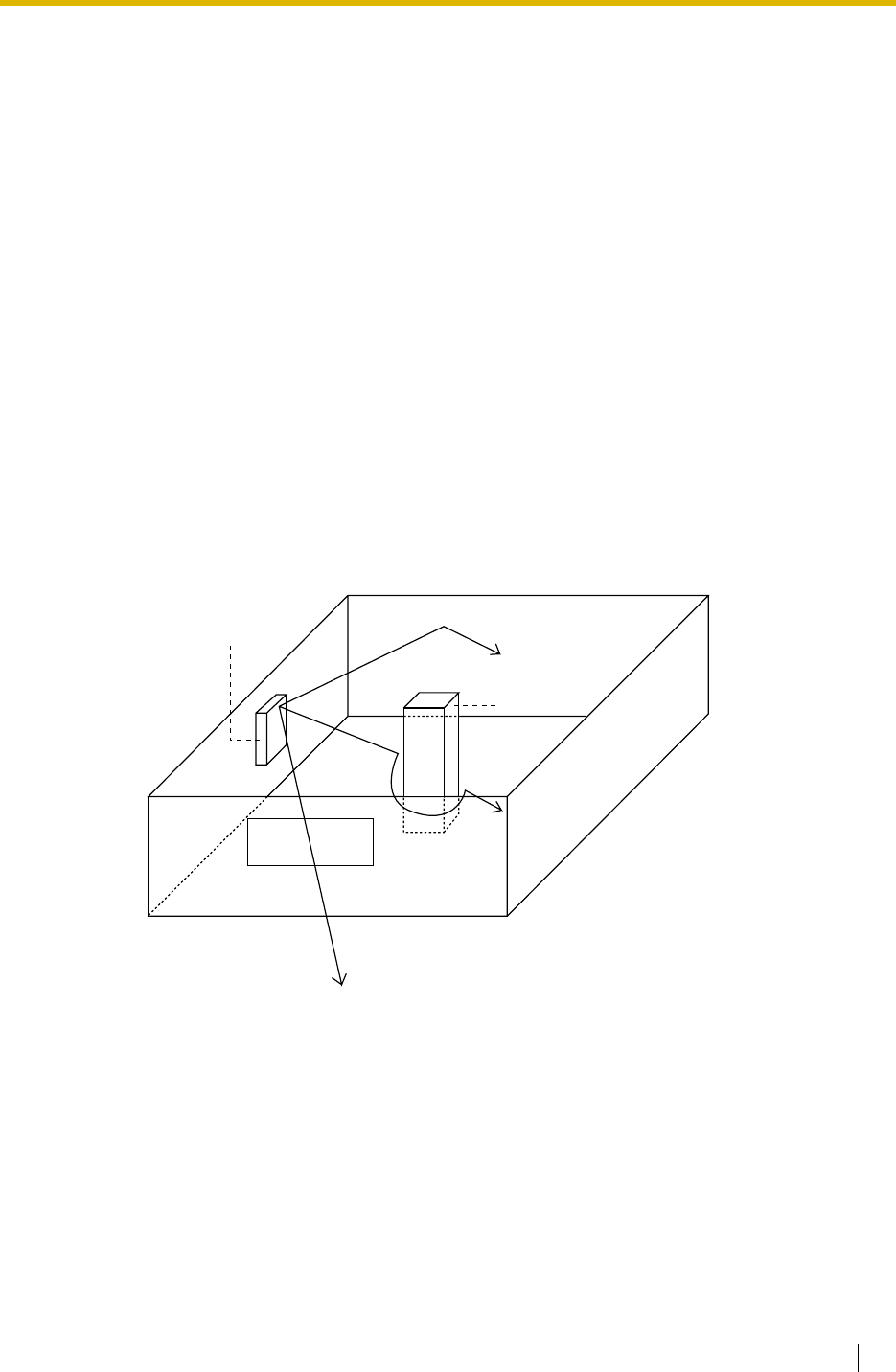
2.7 Connection of DECT Portable Stations
Installation Manual 89
2.7.3 Site Planning
Choosing the best site for the CS requires careful planning and testing of essential areas. The
best location may not always be convenient for installation. Read the following information
before installing the unit.
Understanding the Radio Waves
Characteristics of Radio Waves
The transmission of radio waves and the CS coverage area depend on the structure and
materials of the building.
Office equipment, such as computers and fax machines, can interfere with radio waves. Such
equipment may create noise or interfere with the performance of the PS.
The illustration below shows the special transmitting patterns of radio waves.
1. Radio waves are reflected by objects such as those made of metal.
2. Radio waves are diffracted by objects such as metallic columns.
3. Radio waves penetrate objects such as those made of glass.
Relationships Between Radio Waves and Building Structure and Materials
• The CS coverage area is affected more by the building materials and their thickness than
the number of obstacles.
• Radio waves tend to be reflected or diffracted by conductive objects and rarely penetrate
them.
• Radio waves tend to penetrate insulated objects and are rarely reflected by them.
• Radio waves penetrate thin objects more than thick objects.
• The table below shows the transmission tendency of radio waves when they reach objects
made from various materials.
CS
Column
3. Penetration
2. Diffraction
1. Reflection


















